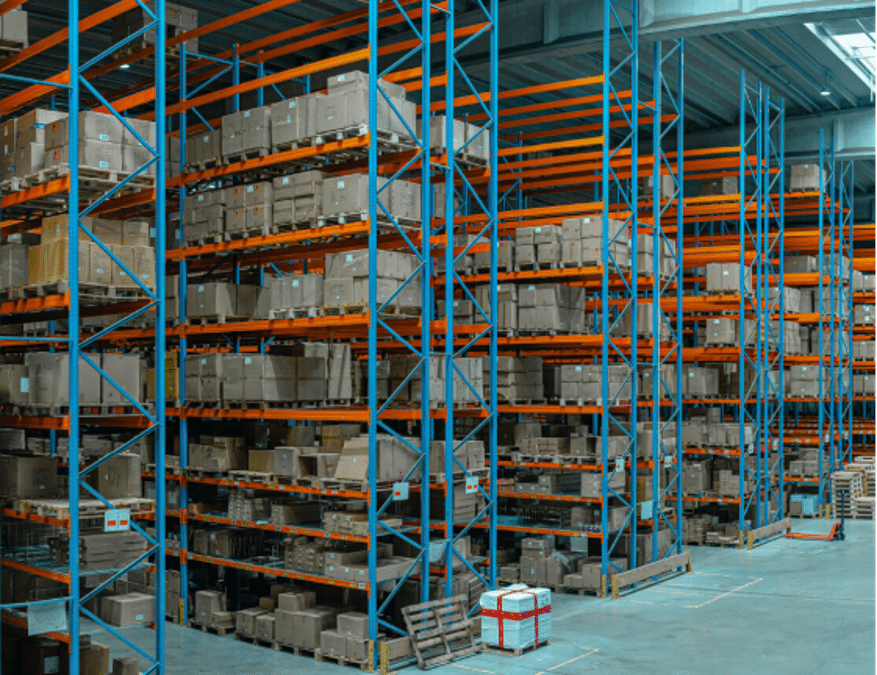Indoor positioning and tracking refer to the technology and techniques used to locate and track objects or people inside a building or other enclosed spaces where GPS signals are typically unavailable or unreliable. It involves determining the position and movement of objects within the indoor environment using various sensors, signals, and algorithms.
The Angle of Arrival (AoA) is a commonly used indoor positioning technology. AoA technology relies on the principle that the angle at which a signal arrives at a receiver can be used to estimate the location of the signal source. The position of the object or person can be determined by measuring the angle of arrival from multiple reference points.
The Working Principle of AoA technology Involves the Following Steps
1. Reference points:
Several reference points, such as fixed beacons or access points, are placed at known locations throughout the indoor environment.
2. Signal transmission:
The object or person being tracked emits a signal, typically radio or acoustic waves.
3. Signal reception:
Multiple receivers or antennas at different reference points receive the signal emitted by the tracked object or person.
4. Angle estimation:
Each receiver measures the angle at which the signal arrives relative to its position. This is achieved by analyzing the phase differences or time delays between the received signal at different antennas.
5. Position estimation:
Utilizing the angles and the known locations of the reference points, algorithms are applied to estimate the position of the tracked object or person within the indoor space.
Advantages of AoA in Indoor Positioning and Tracking
● Highly Accurate Location Data
AoA technology offers high indoor positioning and tracking accuracy. By measuring the angles of arrival from multiple reference points, it can provide precise location information of objects or people within the indoor environment. This accuracy is beneficial for applications that require precise positioning, such as asset tracking or navigating complex indoor spaces.
● Real-time Tracking and Monitoring
AoA enables real-time tracking and monitoring of objects or people within indoor spaces. The technology allows for continuous and accurate updates of the position and movement of tracked entities. This is particularly useful in applications like logistics, where real-time tracking is essential for optimizing operations and ensuring efficient workflows.
● Improved Safety and Security
AoA technology can enhance safety and security in indoor environments. It enables tracking personnel or assets, ensuring they are in the designated areas, and detecting unauthorized movements. In emergencies, such as fires or incidents, AoA-based systems can quickly locate individuals, enabling prompt response and evacuation.
● Cost Savings
AoA technology can lead to cost savings in various ways. Firstly, it eliminates manual tracking and monitoring, reducing labor costs. Additionally, it enables efficient asset management, preventing the loss or theft of valuable items. Moreover, AoA-based systems can optimize workflows and resource allocation, increasing operational efficiency and cost savings.

The Use Case of AoA in Indoor Positioning and Tracking
AoA technology has numerous use cases in indoor positioning and tracking across various industries, including:
. Retail and Hospitality
AoA technology can improve the customer experience in retail and hospitality environments. AoA-based systems can also optimize store layouts and product placement, improving the flow of customers and increasing sales. AoA-based RTLS can enhance the guest experience in hospitality by providing real-time location-based services, such as direction finding, recommendations, and personalized offers.
. Healthcare and Medical Facilities
AoA-based systems can improve asset management, preventing the loss or theft of valuable medical equipment. Additionally, it can enhance security in restricted areas, such as operating rooms or pharmacies.
. Warehousing and Manufacturing
AoA technology can be applied to optimize logistics and operations in warehousing and manufacturing settings. Tracking the movement of goods and equipment can improve inventory management, reduce delays, and increase productivity. AoA-based RTLS can also enhance safety in hazardous environments, such as chemical plants or construction sites.
. Sports and Entertainment
AoA technology can be used in sports and entertainment venues to enhance the fan experience. It can improve fan engagement and satisfaction by providing real-time location-based services like direction finding, concession recommendations, and merchandise offers. AoA-based systems can also enhance safety and security in crowded areas, such as stadiums or arenas, by detecting unauthorized movements and potential incidents.
How to Choose the Best AoA Technology?
Choosing the best AoA (Angle of Arrival) technology requires careful consideration of several factors. Such as:
● Accuracy,
● Compatibility,
● Scalability,
● Ease of Deployment,
● Power Consumption
● Cost-effectiveness,
● Support and Maintenance
In the end, Research the reputation of the technology provider in the industry. Look for customer testimonials, case studies, or references to gain insights into the performance and reliability of the AoA technology. Consider feedback from other users in similar applications or industries. Our recommendation is Blueiot AoA System.
Blueiot AoA System
Blueiot’s Bluetooth AoA (Angle of Arrival) technology is based on the latest Bluetooth 5.1 standard and is designed for high-precision indoor positioning. It utilizes the unique direction-finding capabilities of Bluetooth 5.1to accurately determine the position of tags or devices within an indoor environment.
The Bluetooth AoA algorithm implemented by Blueiot allows for precise localization with an accuracy of up to 0.1 meters, significantly higher than traditional low-precision Bluetooth positioning methods. It improves the accuracy of Bluetooth positioning by tenfold. The technology is compatible with Bluetooth 4.0 or higher devices, making it highly versatile and compatible with various tags and devices.
About Blueiot
With years of experience and expertise, Blueiot has established itself as a reliable provider of indoor positioning solutions in the global market. They are also an industry member of 5G AIA (Alliance for Industrial Internet), demonstrating their commitment to advancing technology and providing cutting-edge location-based services.
Consider Blueiot a reliable and innovative choice for indoor positioning; you won’t be disappointed.